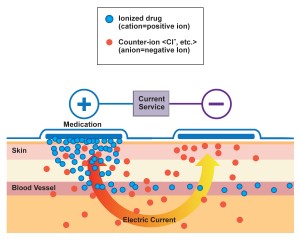
Almost everyone has taken a pill or received a shot at some time. These are two of the most common ways of getting medicine into your body. Not quite so common are things like inhalers and transdermal transfer. Besides being delivery techniques, these things all have something else in common—they are all applications for microcontrollers (MCUs).
With the exception of swallowing a pill, the successful application of any of these delivery methods depends on the skill of the person applying it. This is probably most clearly seen in the case of injected medications. Handling the needle, filling the syringe with the proper dose, penetrating the skin to the appropriate depth, correctly injecting the medicine and, finally, disposing of the used sharps are all tasks that require the user to know what they’re doing. However, it is also possible to automate these tasks.
Fully mechanical, single-use auto injectors have been around for years, but a number of companies are now making or developing devices that can be used to administer multiple doses. At the heart of these devices is a MCU that directs the workings. A push-button or touch-screen interface allows the user to select the desired dosage and start the injection process. Servo motors load a new needle from a cartridge, transfer the medicine and safely store used needles for disposal. Pressure and displacement sensors monitor the progress of the medicine as it is injected, and non-volatile memory records data on each use. The MCU-controlled auto injector not only allows an untrained person to give themselves or someone else an injection, but it also takes some of the stress out of the process, since the patient never even sees the needle.
While only a fairly small number of people need to give themselves shots on a regular basis, another MCU-based drug delivery device promises to become much more popular. Adhesive, transdermal drug-delivery patches are not new, and they are already a multi-billion dollar market. Among the most popular are patches that deliver nicotine to help smokers quit, and scopolamine for preventing motion sickness. In both of these cases, the drug molecule is small enough to permit a therapeutic dose to cross through the skin by passive diffusion. This is also true of every other drug used in passive transdermal patches, which limits the number of medicines that can be delivered this way. Newer patches use iontophoresis, in which a DC electric current is used to increase the diffusion rate of larger molecules. Figure 1 illustrates how an iontophoresis patch works.

MCUs greatly simplify the design of active iontophoresis patches. Such patches are often powered by tiny Lithium coin-cell batteries that cannot supply the voltage required to produce the necessary current through the skin. Using a small MCU, it’s easy to implement a Boost converter to step the voltage up to the required level. The MCUs’ integrated Analog-to-Digital Converter (ADC) allows closed-loop feedback of the voltage and current for safety. On-chip timers measure the operating duration, and shut the drive current down when the desired dosage has been reached. Since these are often single-use, disposable devices, cost can become an important consideration in the design. Small, but feature-rich MCUs such as Microchip’s 8-pin PIC12F family, integrate all the functions and peripherals needed for active iontophoresis patches into a tiny, cost-effective package.
Further out on the horizon, even the venerable old pill is on its way to becoming a MCU application. New devices currently in development will be swallowed like an ordinary pill, but behave differently in the body. Once in the digestive tract, they will sense time, temperature, pH and other quantities to determine exactly when to release their drug for maximum benefit.
These and other MCU-based drug delivery devices will not only make existing drugs more effective and convenient, they will also enable the development of medications for new therapies.






